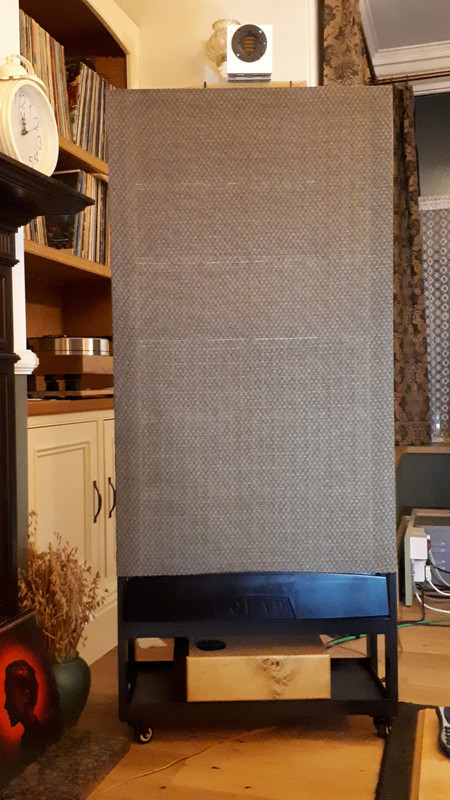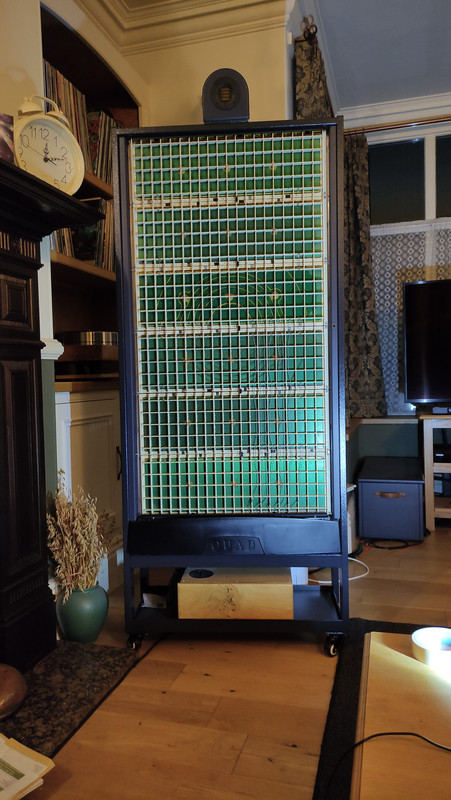Hi all, just read through this interesting thread. Long time ESL enthusiast here.
Lot's of good posts from lot's of folks. Jazzman, love your work.
Have heard many electrostats and planars over the years, in Atl and NYC showrooms.
Still running the Acoustat's original Model X with the direct drive servo amps in the bedroom, which i continue to enjoy and compare to.
ML CLS sit in the closet. Stax Signature phones...yada yada... was a complete "stat head" for over 25 years.
The Acoustat-X have remaining my favorite ESL overall; they get pretty loud and have good bass for a full-ranger, imo.
But the ole more, more, more ......dynamics and bass urge crept in ......and I bought some big Meyersound speakers about 20 years ago.
Not quite the finesse of the stats, but surprisingly close....with beautiful clarity, dynamics, and ball-busting bass (especially after building 4 Danley-designed Labhorns to go with them !)
I've never looked back to ESLs......
Instead i turned to DIY to see if i could emulate, maybe even exceed the Meyer stuff.
First with a live-sound MTM CD/horn with horn loaded 12"s, then modular array-able trap boxes, coax boxes, floor-to-ceiling and CBT line arrays, and lately a string of synergy builds. Along with a number of sub types.
Going for clarity, dynamics, bass, ....as loud and linear as possible.
All the varied speaker building has given me different views from what i held, on why ESLs sound the way they do.
(I thought it was mostly about low mass...fast...you know, the usual hi-fi jargon BS stuff)
Nowadays I believe the ESL/planar sound is more about that they are the home audio speaker design that most closely behaves like theoretical line-array math describes. Their continuous center-to-center design is the only one i know that can satisfy the line-array (LA) requirements at VHF or often even HF (i include ribbons in this ability).
I think it's why VHF just disappears above the speaker's perpendicular height.
An ESL/ planar's typical height lets in operate like a LA down to some frequency, and the horizontal width is also acting devoid of c2c spacing issues (for full-range, non frequency divided panels)
I now realize how ESLs/planars usually don't have the timing issues, that multi-way conventional speakers do, trying to combine different acoustic centers' depths. Which is an immediate improvement to transients.
And the planar surface kinda acts like a point source, albeit a point on a line (or maybe a cylinder?). Surely there is less lobing issues than tying conventional drivers spread out laterally.
If an ESL operates full range, without xovers, I believe that further aids in its ability to have accurate timbre, as well as aiding transients (within it's freq and SPL capabilities).
Imo, tonality is about linear frequency response (flat, other than preference).
Whereas timbre is about a prerequisite linear frequency response ......and adding flat phase.
Flat phase establishes the correct timing between fundamental and harmonics, giving the correct timbre, i think.
Transients get improved further, because phase is without the rotation of crossovers.
As an aside, I've come to realize/believe, transient response (a fast speaker Lol) is simply a fuction of full-range frequency response, timed correctly (which means as smooth and flat a phase trace as possible).
So there's my 2c on why stats sound great. I have no clue how dipoles fit in to any of this thinking yet....so my big disclaimer

I would sure love to hear a giant outdoor live sound ESL.... !!!


